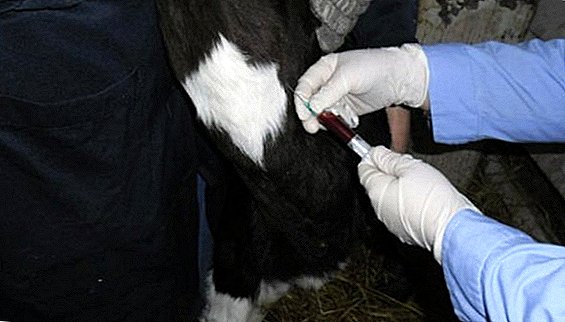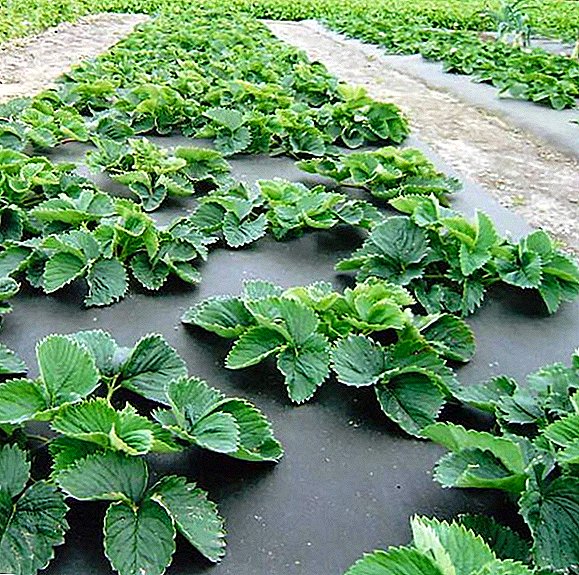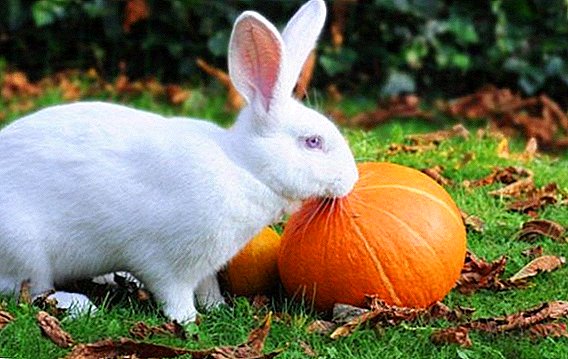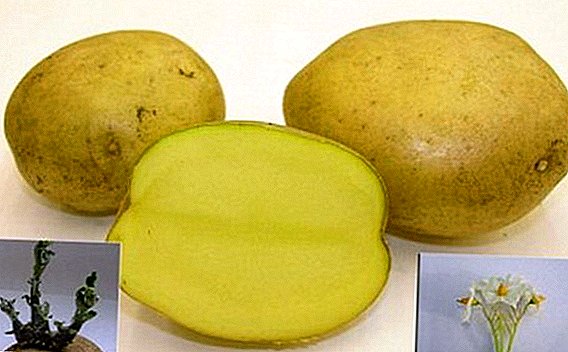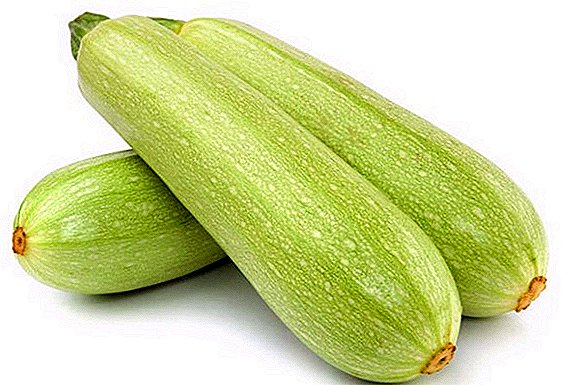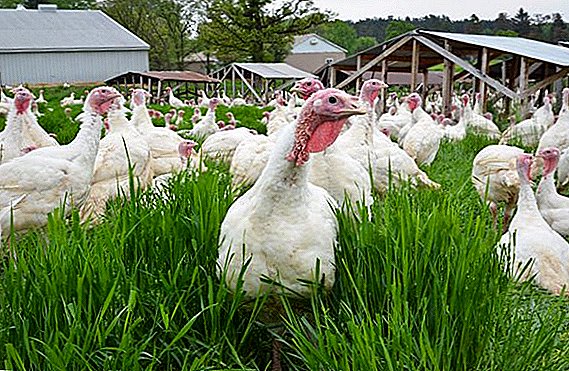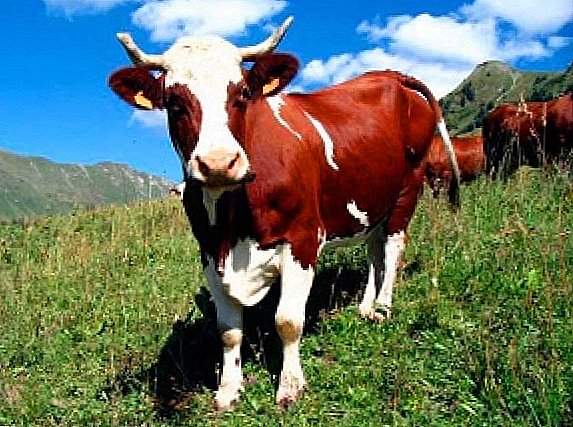
Keeping a cow in a household is very profitable, as this animal can delight the whole family with useful dairy products. However, in order to get them it is important not only to look after and feed your pet, but also to milk it properly.
It would seem - a simple matter, but the amount of milk and the general condition of the cow’s body are very much dependent on the milking technique.
It is important not only to adapt to the nature of the animal, but also to the peculiarities of its udder, the amount of milk that a cow is able to give.
Naturally, experienced milkmaids also know various ways to increase milk yield and quality of milk produced, which we will gladly share with you in the article below.
We prepare not only ourselves, but also prepare the cow for the milking process

Before you begin the process of milking a cow, it is very important to take care of hygiene.
The first step is to clean the stall - fresh manure must be cleaned, instead, fresh and necessarily dry straw is laid (sawing is also possible).
Secondly, it is important that the shed is ventilated before this. In the summer, when there are a lot of different insects, it is very important before milking and during it to close the door to the barn. This will slightly reduce the activity of the flies, and the cow will not fan its tail so intensively.
Tailing of the tail also helps, although the animal will not get rid of nervous tension.
Young and temperamental cows are best tied, because they can knock out a bucket with the need and pour milk on the ground, at best - throw garbage in it. But still, the cow gets used to this process quickly, and over time it will get used at the same time to become comfortable for milking and to behave obediently throughout this process.
Experienced milkmaids advise very gently to treat the animal, trying to maintain "friendly" relations with it.
In order to relieve the cow from stress, it is recommended to stroke her before starting milking, nickname and pamper him with some delicacy. The fact is that a cow is able to memorize its owner very wellbecause it recognizes people by smell, and respond to her kindness.
Even absurd things happen when a cow gives milk to only one person to whom she is accustomed.
Do not forget wash your hands before milking, put on a clean bathrobe or at least an apron. Also, you need to thoroughly wash the udder, removing all accumulated dirt from it.
For washing the udder it is better to use warm water so as not to irritate the cow. After, the udder is wiped dry.
To stimulate cow's milk yield, it is important udder pre-massage. It should include light rubbing and patting, and not only on the nipples, but throughout the udder. Due to this, your milk cow will form a lactation reflex, the milk flow to the nipples will increase significantly.
Features of the milking process: the main techniques and practical advice

It is most convenient to milk a cow sitting on a low bench, since the more milk a cow gives, the longer the milking process will be.
To collect milk you need to take some capacity - an enamelled bucket or a special hearthack. Please note that after each milking, the vessel used for milk will need to be washed and dried. After the cow has been milked, the milk will need to be covered either with a lid or with gauze so that no rubbish gets into it.
You can grab the nipples during milking in two ways - either with just two fingers, or with a fist. Although for many, milking with fingers is a more convenient way (especially if the cow's nipples are small), but experts believe that such milking can lead to various problems with udder.
For this reason, when milking the nipples need to wrap all the fingers, that is, with a fist. In order not to rub the skin of your hands and the skin of the nipples of a cow, before milking, rub your hands and brush them with oil.
Description of cow milking
A cow needs to be milked at the same time with both hands. The first issued two front nipples, and after them already two rear. The bucket is placed on the floor under the udder, it can also be clamped with its feet, so that it does not accidentally turn over or it is not knocked out by a cow.
We carry out milking:
- Cover the nipples with both hands and press them with all your fingers. The brush remains stationary, but we pull our fingers slightly to the bottom, as if we are dragging off the nipple.
With the nipple should run a trickle of milk, hitting it in the dyke, slightly unclench the fingers and grasp the nipple again, repeat the described action. The main thing is not to pull the nipples very hard and sharply.
- Usually the first two streams of milk are decanted in a separate bowl. According to the condition of the produced milk, it is determined whether the animal has diseases.
Also, dirt comes out of the first milk from the nipples.
- Be sure to adhere to such an alternate milking, when you first issued the front nipples, and then back. It moves from one to the other as the milk streams are exhausted.
- You can periodically massage the udder, so that new portions of milk will be added to the nipples.
It is especially important to make a massage before the completion of milking, then the milk will flow fatter.
- Upon completion of milking nipples, it is important to wipe dry, then lubricate with some fatty substance - petroleum jelly or butter. This will protect the nipples from cracking in the hot season.
How often should milking be done: get acquainted with different options and opinions

Most often milking a cow is carried out three times a day.
However, some farms in which animals are grazed around the clock and do not use any additional feed, except grass, for feeding cows with one-time milking.
But this is done solely for economic reasons, and also due to the fact that in such conditions, cows usually produce a small amount of milk.
But still, if a cow is able to produce a large amount of milk, then a one-time milking will by no means suit her. But in the future, opinions and milkmaids, and other professionals diverge very much.
Some think that milking three times a day increases milk yield, others hold the opinion that the number of milkings does not affect the amount of milk produced.
Probably, it would be more correct to say that if the cow is first milked three times a day, and then switched to twice a day, then in such a case the milk drops will be more likely.
Therefore, this issue should be approached on the basis of its own capabilities. If it is not difficult for you and you will have enough time to milk your pet three times a day, do it three times.
If in the daytime you are too busy, and it is more convenient for you to carry out milking only in the morning and in the evening - you will have to give preference to two times milking.
It is also interesting to read about pig meat breeds.
Is it important to take into account the milking time of a cow and how does this affect the amount of milk?
The time for milking should always be about the same.
First, with the help of this you discipline your cow, and secondly, adjust the processes of milk accumulation in the udder.
The fact is that the more milk it accumulates in it, the further it is produced slowly. But after milking and massaging during her massage, the mammary glands of the cow are activated, and the milk again begins to be actively produced.
If you decide to milk your pet three times a day, then intervals between two milkings should be approximately 8 hours. That is, milking should begin at about 6:00 am, at 12:00 pm and at 7:00 pm in the evening.
But at twice this period of time it is advisable to increase to 12 hours. Thus, if the cow was milked in the morning at 6:00, in the evening this process should be started at 18:00. But nevertheless, it is important to observe not the interval between milkings, but to adhere to approximately the same time.
Even if the specified intervals are difficult to maintain, milking can be done either an hour earlier than the usual time, or an hour later. That is, if you usually milk a cow three times a day, then the minimum interval between milkings may be a period of 7 hours, and the maximum - 9.
Many also combine milking time with cow feeding. In fact, it is very convenient, because you do not have to go to the barn very often, first to feed and then to milk the cow.
Problems and diseases of the cow associated with the udder and the qualitative characteristics of milk
In cows there are two of the most common and problematic diseases that affect the mammary glands and greatly affect the quality of the milk produced. Therefore, if you decide to keep a cow, you need to be prepared for such a thing.
What is dangerous leukemia and how to understand its symptoms?

Infection with leukemia Your cow can in many ways. Very often this happens when veterinarians carry out various works related to the blood collection from an animal. But besides blood, the causative agents of leukemia can also be found in sperm, milk, and also amniotic fluid (that is, the disease is transmitted from mother to calf).
Sick animals are very important to limit in contact with the whole herd., because the described disease is even transmitted through blood-sucking insects. Another negative aspect of the disease is that it is almost impossible to determine the presence of the disease in the first stage.
Yes, and there are no clearly visible symptoms on the second, the disease is determined by the hematological changes that occur in the peripheral circulatory system.
Since the causative agents of leukemia are found in milk, it cannot be taken fresh, so it should be boiled well before it.
Unfortunately but leukemia cannot be treated. The only necessary preventive measure is the annual two-time blood test of animals for the presence of infection.
Thus, if necessary, you can timely learn about the disease and apply the necessary measures of isolation or destruction of livestock.
Mastitis: symptoms, prevention and treatment of the disease in cows?
This disease can be identified almost immediately by the highly inflamed mammary glands of a cow. Most often pay attention to him when milking.
Causes of Mastitis There may be the following factors:
- Unsanitary conditions of detention, when the udder does not wash well or does not clean at all before milking; in the absence of regular tidying up with a cow.
- During dry summer periods when milk stagnates in the udder. Very often during the dry period of time, mastitis manifests itself due to the fact that it was not treated before.
- With catarrhal diseases of the animal, when it has a high temperature for long periods of time.
- With improper milking.
Thus, the prevention of mastitis may well be a full feeding, as well as compliance with all necessary sanitary standards for keeping cows.
When mastitis, in no case can milking be used with a special automated apparatus.
You can determine mastitis by the clots that appear in the milk, pus, and sometimes even bloody marks. However, this disease also has a hidden form, when its presence in an animal is determined only by the basis of special checks.
For example, you can add the drug Mastidine in a few drops of milk. If there is a disease, the milk will become similar to jelly and the treatment of the cow should be started immediately.
The most effective use of antibiotics, although there are many traditional means of treatment.
Since mastitis can cause different types of bacteria, but the drug must also be administered individually. To determine which antibiotic will be effective, it is necessary give your cow's milk for analysis in a special veterinary laboratory.
Experts are sure to advise you that the animal can really cure. It is possible to treat a cow without a veterinarian, only by receiving detailed instructions from him.
Ways and secrets to improve milk yields

- The amount of milk produced during milking directly depends on how and what the cow eats. It is especially important to pay attention to this factor during periods of dry skin and in the first three months after calving.
It is very important that the diet compiled for an animal gives it a lot of energy that can be easily absorbed by the body from carbon, vitamin and mineral substances, fats and proteins.
Thus, in addition to high-quality feed during these periods, it is important to give the cows various mineral and vitamin supplements.
- We have already mentioned how important it is to carry out preliminary training before milking. Massages and attention to the cow also affect the amount of milk produced.
- It is very important that the cow is healthy. Also, in no case it is not necessary to subject the animal to stress, because from such milk yield may fall at times.
Milk quality: discussing positive and negative influencing factors?
The composition and properties of milk can change quite often, and it will not always indicate something bad.
For example, factors of such differences and changes can be attributed:
- Breed of a cow, as well as her age. There are many dairy breeds that give large amounts of full-fat milk. With age, milk yield and quality indicators decrease.
- The lactation period in which the animal is located.
- Features of the diet of the cow, as well as its maintenance.
- The level of productivity.
- Features and regularity of milking.
So, for the lactation period, that is, for 300 days, the milk of the same cow can change its properties three times. In particular, right after calving, we receive not milk, but colostrum, which leaves the udder for the first 5-7 days.
For the longest period, we get regular milk, which 10-15 days before calving is replaced by old-grown, bitter taste.
Another very important characteristic of cow's milk is its fat content. Today, experts call the most important criterion for the appearance of high fat content in milk, the amount of protein that a cow receives from food.
Also, fat content increases with the age of the cow, although after 6 years it gradually begins to decrease.
Also, the chemical analysis of the composition of milk often determines the content of milk sugar. The taste of milk directly depends on this component. However, it is impossible to influence its change, since milk sugar is always at the same level Regardless of the number of years of lactation.
With regard to the diet of the cow, the more you will give her feed containing proteins, the fatter milk will be. Proteins, that is proteins, will also get into the composition of milk. Such feeding can increase and milk yield, raising them by 10%.




